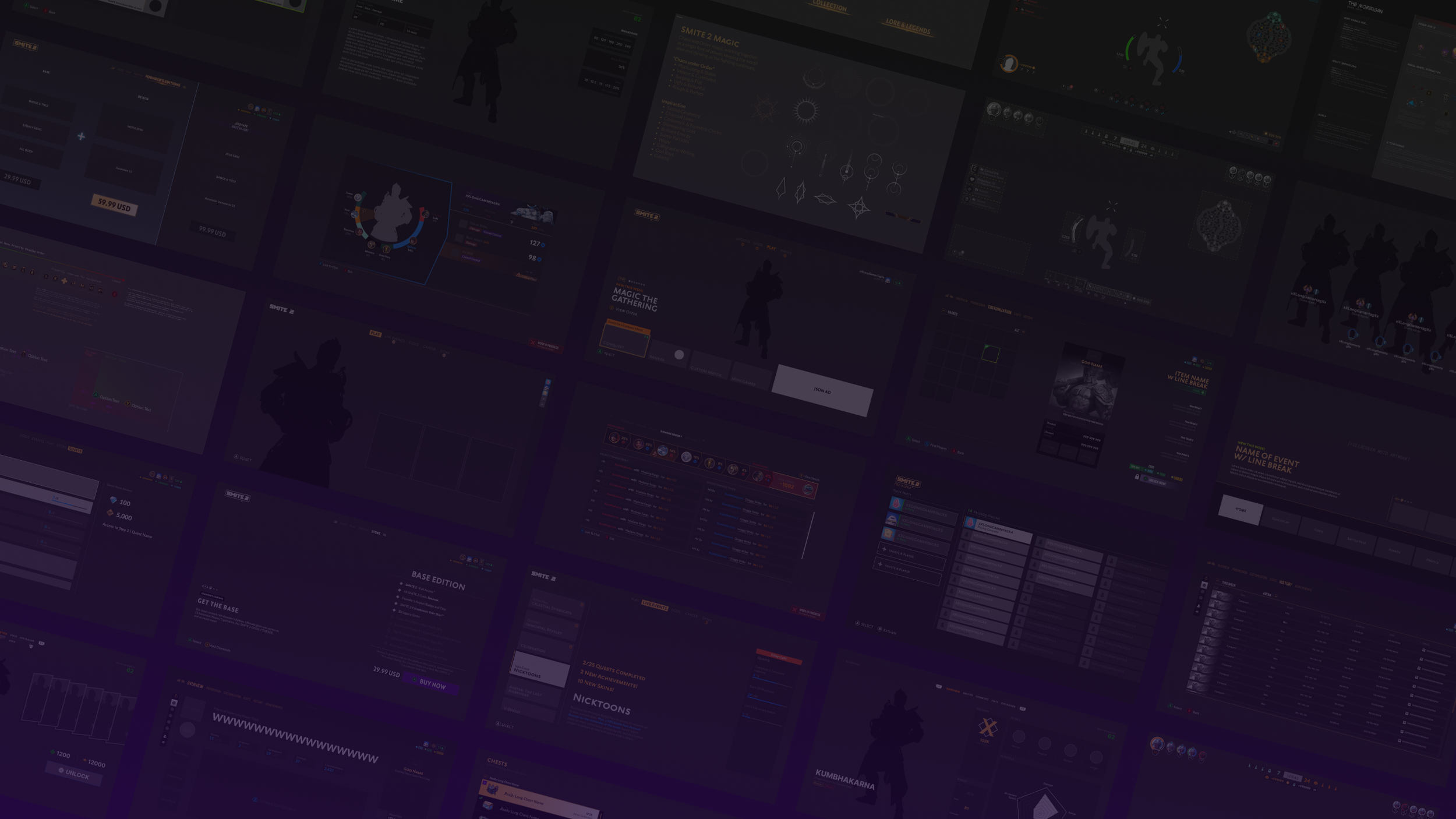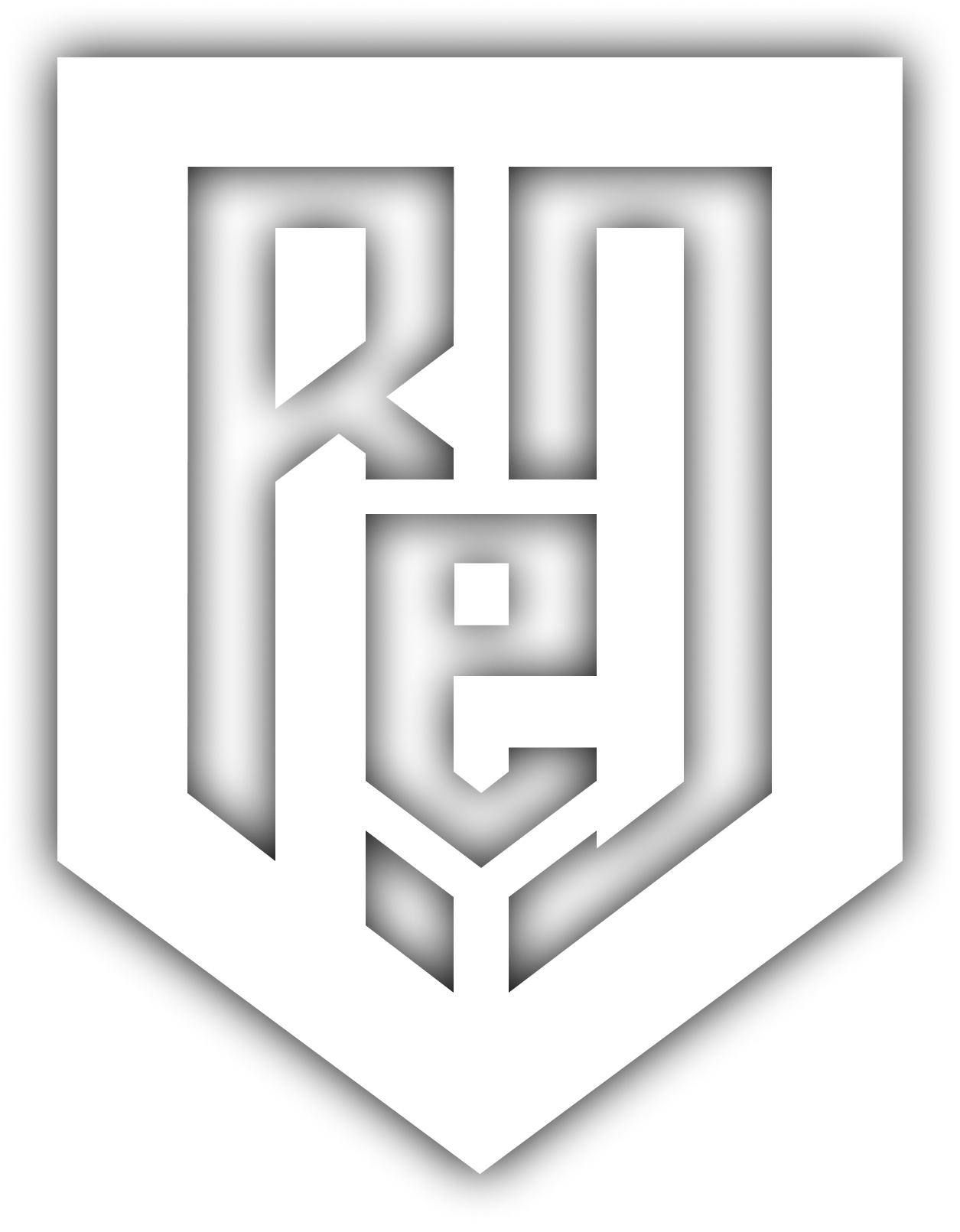
FIRST TIME UX
ADVANCED / LEAD UX DESIGNER | SMITE 2
PROBLEM STATEMENT
SMITE 1’s Onboarding is very limited, and primarily focused on the in-game experience of the Arena match type. MOBA’s in general can be very complex, especially for players who are generally unfamiliar with the genre, and understanding the game outside of the gameplay is important for a player’s overall experience.
Onboarding is a strategic system aimed at reducing player turnover by enhancing player engagement. It’s a critical part of a User’s first experience with every product, and it’s the first step towards becoming proficient with it.
SOLUTION
With modern games becoming more complex, syncing with our community, and understanding how the current layout offends many common psychological ideals, we need to look into creating an organized division of the layout. The addition of a tab menu allows us to organize the Main Menu in such a way that gives players more control in what they’re viewing as oppose of seeing everything on the screen simultaneously. In order to achieve this, it’s highly recommended we seek out feedback from our community. Without direct feedback, we rely on assumptions and limited telemetry data to guide our decisions. In speaking with SMITE 2 stakeholders, and many community members on our Discord servers, I ran a card sorting exercise with both groups on how the layout could be created. The wireframes below are the result of these exercises.
KEY AREAS NEEDING ONBOARDING
Front End to guide players through a desired game loop.
Each Game Mode to help players feel comfortable playing modes they may be nervous experiencing.
Systems that are generally identified as complex by playtests.
UX GOALS
Create an out-of-game experiences that are clear about the type of actions that players can complete that cover basics
In-game onboarding shouldn’t be very specific. We need players to recognizes key moments in different matches to understand their roles.
Avoid over-explaining simple concepts, and try to simplify details of complex systems. Excessive text will encourage players to skip reading onboarding tips.
Avoid reinventing the wheel. Many systems are being carried over from SMITE 1, or exist in other titles. As such, player’s don’t appreciate having their hands held when systems are recognizable.
UX ARCHITECTURE OF FIRST LAUNCH
Mapping out the expected path of new and existing players is a critical step to help guide designers, producers, engineers and stakeholders to understand what we’re trying to help players achieve.
This is an early pass of how new and existing players will be “filtered” during an individual’s initial launch of SMITE 2. We’ll lean on existing backend data from the server to guide players through a preset experience.
New players (missing Hi-Rez or RallyHere accounts) will only have access to one UX path. This path has limited customization options; Accessibility may be the only editable settings.
Lapsed players (Hi-Rez and RallyHere accounts, but haven’t played 3 months) will have access to two paths. The second path will offer customization options, and will have the ability to skip sections similar to SMITE 1.
Players with active accounts (accounts with recently played hours) will have access to third path that allows them to skip the entire tutorial, minus SMITE 2 exclusive designs.
ADDITIONAL EARLY WIREFRAME EXPLORATION
LOCKED EXPERIENCES (NEW)
During the SMITE 1 onboarding experience, players are introduced to the Welcome Pass while simultaneously having access to other experiences, such as the Battle Pass and Ascension Pass. This overlap can overwhelm players, potentially causing them to feel unfocused due to the abundance of content they feel obligated to engage with.
To streamline the experience, progression for the Battle Pass and Ascension Pass can accumulate passively in the background and only become accessible after the Welcome Pass is completed. This approach helps maintain player focus during the initial onboarding phase.
As players advance through the Welcome Pass, additional experiences can gradually unlock, allowing them to explore core gameplay loops with new features and systems at a manageable pace.
MATCH MINI-GAMES (NEW)
The objective is to develop incentive-driven mini-games tailored to enhance player engagement and focus on key moments experienced across different game modes, depending on the roles players choose.
For instance, a Jungler-focused mini-game could challenge players to clear as many camps as possible within a set time, competing against NPCs and enemy god bots. Success would depend on strategic decisions, such as selecting the appropriate gear before the match and efficiently navigating the map to determine the optimal attack order.
To encourage participation, rewards such as in-game currency, XP, and base chests could be offered upon the first successful completion. Introducing leaderboards could further drive competition and interest, although this approach may have mixed results. To keep the experience fresh, the map layout and strategy paths could evolve with each patch, offering additional payouts to top-performing players.
RETURNOTHER UX DESIGNS


